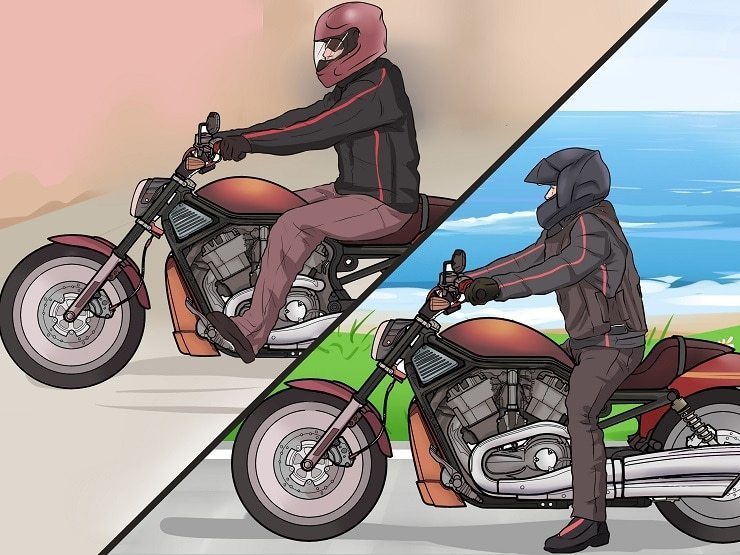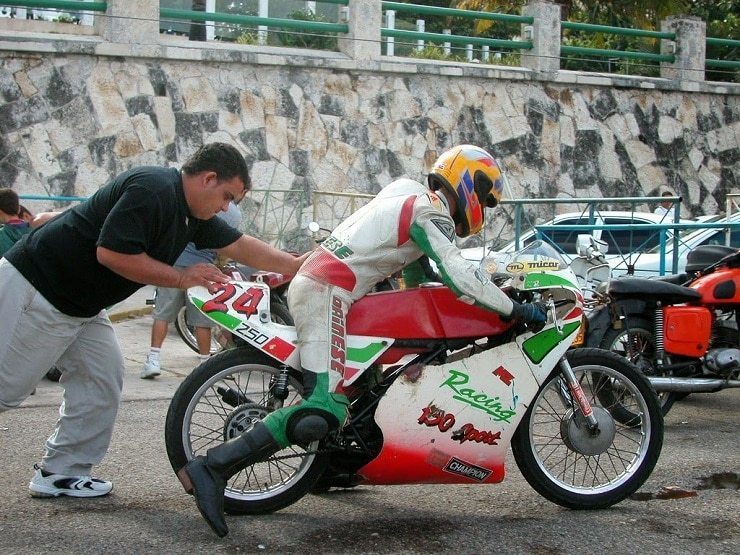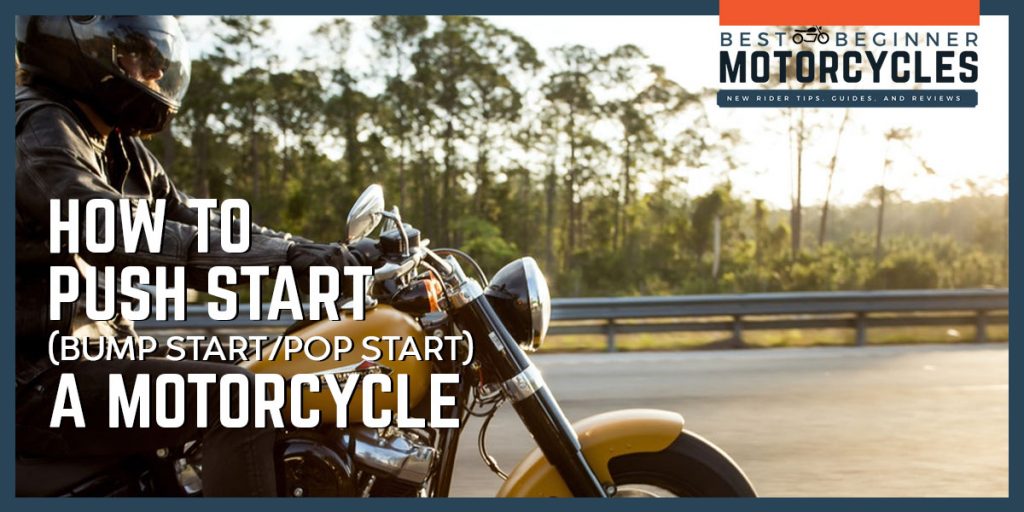Table of Contents
It was 25°c outside (about 77°F for my American friends), the sun was shining, and my wife and I were ready to ride. I’m riding MOTGATT today (I know, I know, I should have been ATGATT) and am decked out in some great gear that I’m testing: the brand-new NEXX X.VITILUR modular helmet, my REAX Jackson riding jacket, SIDI Performer Air boots, and Motonation Campeon gloves. My wife is decked out, too in a similar getup. We’re ready to go.
I walk out to my FZ-6 and my heart sinks: the key is in the ignition (oops), and the ignition is set to “on” (f***). She’s dead, Jim.
All is Not Lost: It’s Time to Push Start This Bad Boy
In this situation, you have an option outside of jumping the battery: the push start. Also called a “bump start”, “roll start”, or “pop start”, the push start turns the engine over in the hopes that the engine will start. Once started, the alternator runs the electrical components (at least, on modern bikes).
As it so happens, push starting your bike is pretty easy and even easier when you know what you’re doing. Let’s get down to it.
First, Check These Things if Your Motorcycle Won’t Start
If your bike refuses to start, you will need to look into a couple of things that might prevent your motorcycle from running properly. You’d be surprised how often small human error keeps us from riding, and there’s nothing worse than spending 10 minutes trying to push start your bike only to realize something basic is missing.

Check the ignition kill switch
The kill switch is connected in series with the ignition switch. If your bike won’t start, make sure the kill switch is not open or is set to the ‘STOP’ position.
Check the fuel level
It can happen to anyone. If your bike refuses to start, you should check the fuel level and make sure that you have enough gas to carry on. Do you have a faulty fuel gauge? Pop open the fuel cap and see for yourself.
Check the fuel petcock
This is for non-EFI/fuel injected bikes. Make sure that the fuel tap petcock is set to OFF.
Check the kickstand
As an added safety feature, most bikes will not start if the kickstand is down and the motorcycle is in gear. Make sure that the kickstand is up before attempting to start your bike.
Make Sure That You’re in Neutral
Double check to make sure that your gear is set in neutral before starting the bike.
If your motorcycle still won’t start after checking the above-mentioned tips, then you will need to jump start your ride.
How to Push Start a Motorcycle
READ THESE INSTRUCTIONS IN FULL BEFORE ATTEMPTING. Don’t do what I did the first time I tried to push start my bike and have it in first gear (for example). 10 attempts later… and I realize I needed to have it in second gear. Oops.
The procedure is the same as push starting a car. The basic premise is to engage a gear while holding the clutch pedal, get the bike rolling, and release the clutch. This will turn the engine over, so you can get back on the road.
It may take a few attempts to get going. There are also a few things you need to factor in to do it properly.

Step 1: Find the perfect spot
The easiest way to jump-start a motorcycle is to get a couple of friends to push your bike. But if you’re on your own, you won’t have the benefit of friend-power.
The best place to push start a bike is on a gentle hill. Gravity will do most of the work here.
If you find yourself in a relatively flat road, you can still bump start your machine. You just need to push the bike at a reasonable pace before jumping on the bike and releasing the clutch.
Step 2: Engage 2nd or 3rd gear
If you want to push start your motorcycle like a pro, always use 2nd gear or 3rd gear. Do not use 1st gear when push starting your bike, especially if your bike is equipped with a high-compression engine, as the gear ratios are not suited and you run the risk of locking up your rear tires.
I’ve read some advice online (on forums mostly) that suggest first gear. DO NOT USE FIRST GEAR.
Step 3: Press the clutch & get the bike rolling
- After engaging either 2nd or 3rd gear, press and hold the clutch and get the bike rolling. Unsure how to properly move your motorcycle? We’ve got detailed instructions on how to move your motorcycle here.
- If you found a hill, start from the top of the hill and cruise downwards.
- If you have your buddies with you, hold the clutch and tell them to start pushing!
Your motorcycle should be traveling at a reasonable pace before releasing the clutch. Think jogging pace, and you’ll be alright.
Step 4: Release the clutch
Once you’re up and rolling, release the clutch. The spinning rear wheel will begin to turn the engine. If the engine doesn’t start, you might need to roll the bike a bit faster and repeat Steps 2 to 4.
Remember that it may take a couple off attempts to successfully turn the engine and start the motor.
Step 5: Put the Bike in Neutral
Now that the engine is running, engage neutral and apply the brakes. Spent a few minutes revving the engine- this will charge the battery faster than just leaving it at idle.
You will need to keep the engine running after push starting the bike. If the engine is cold, warm it up by staying on top of the throttle. Don’t pin it, but rev it to the low-mid range of its RPM. The goal here is to get the bike self-sustained and no longer at risk of dying.
Step 6: Ride!
Once the engine is all warmed up, take it for a short ride and make sure everything’s good to go. Do this after you’ve checked over the bike and made sure that nothing is seriously wrong with it. Go over the pre-ride checks and make sure it’s all good.
A few likely causes of your dead bike:
- Leaving the lights on.
- The battery itself is old and needs replacement.
- The spark plugs are fouled.
- The fuel pump is on its way out (or dead already)
Fix it up and make sure your bike is good to go!
Excellent How-To Video
Created by The Moto King on YouTube.
Helpful Tips When Push Starting Your Bike
A few other things to consider:
- If your bike has a large displacement motor, you should hit the starter button at the same time as releasing the clutch when the bike is rolling. This will help to get the motor turning as you clutch start the bike.
- If you have an older motorcycle, try to use some choke as you push start the bike. There’s a good chance the engine is going to lug when started.
- For high compression motors, it is advisable to stand on the foot pegs while the bike is rolling before releasing the clutch. This will put more weight down on the rear wheel, making it easier to turn the motor.
- Make sure the ignition is set to “on”. I know this sounds dumb, but you’d be surprised how easy it is to overlook these things.
Conclusion
It’s not hard to push start a motorcycle. Just follow the steps we outlined above so you can push start or clutch start your bike like a true professional rider.



